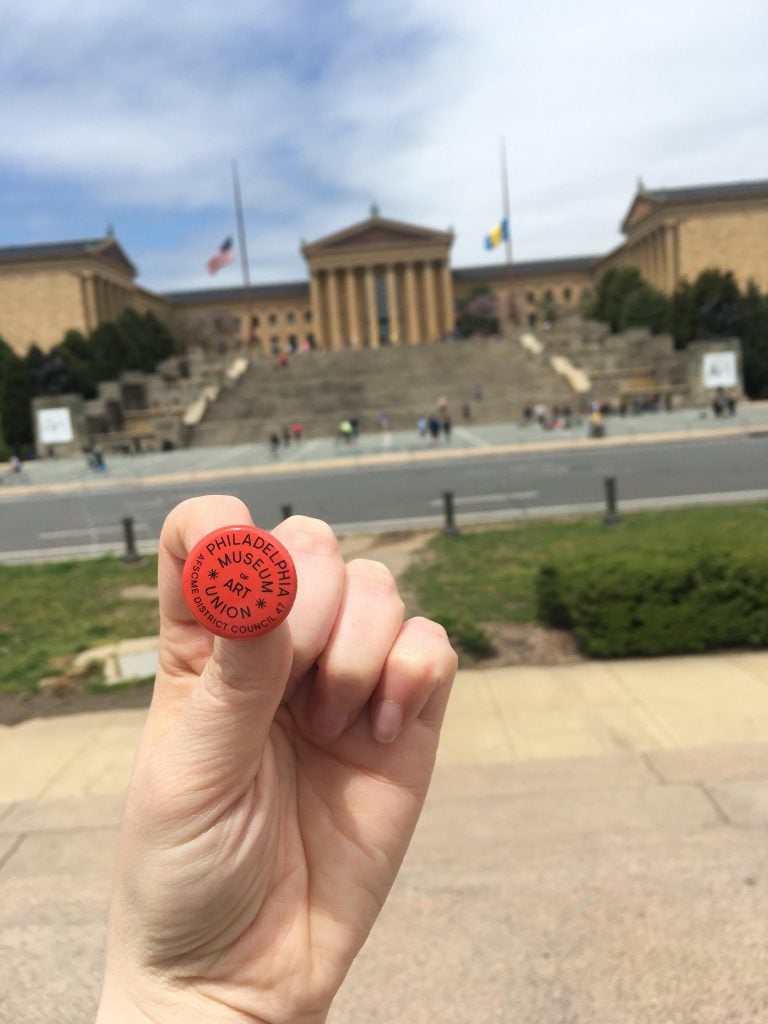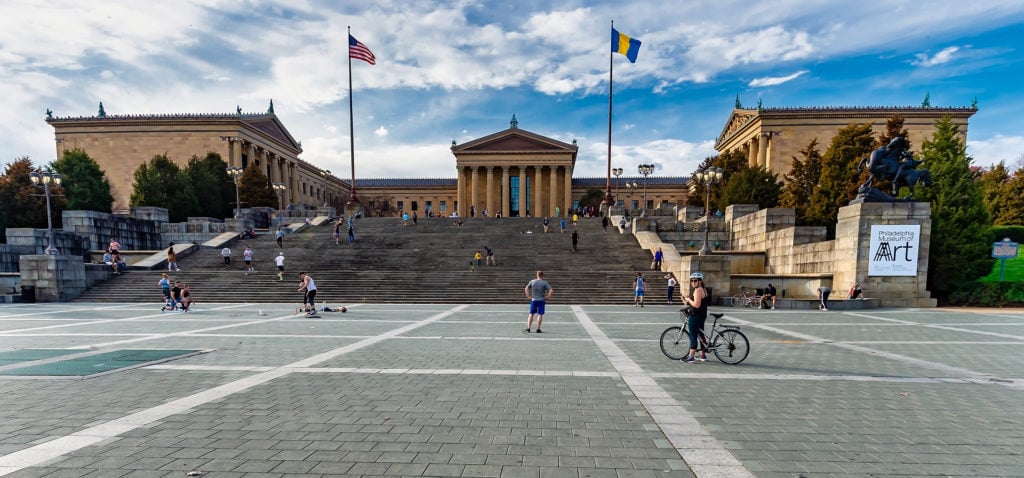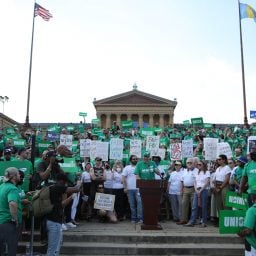Workers at the Philadelphia Museum of Arts (PMA) voted to unionize today, less than 48 hours after the institution announced that it had laid off 25 percent of its staff.
The bargaining group, which is affiliated with the American Federation of State, County, and Municipal Employees (AFSCME) District Council 47, is the first wall-to-wall union at a museum in the country, meaning that any employee who works more than four hours a week at the institution is eligible to join.
After months of negotiations between the union and the institution’s leadership, a mail-in vote for all museum employees was conducted between July 9 and July 30 by the National Labor Relations Board, a federal organization.
The results, tallied this morning, showed that 89 percent of workers agreed to join the union, far surpassing the 50 percent mark needed for a win.
“It feels fucking awesome,” says Adam Rizzo, a member of the union’s organizing committee.
Rizzo and dozens of other employees watched live on Zoom today as the Labor Relations Board conducted the final count. “We knew we had the support already. It felt great to see the votes come in in person, but it seems like the museum wasted a bunch of time and resources fighting this. Still, we’re absolutely thrilled.”
“Just as we respected the right of staff to organize at the outset, we also respect today’s outcome,” Timothy Rub, director and CEO of the museum, said in a statement to Artnet News.
“As we move towards the development of a collective bargaining agreement, we pledge to work in good faith to achieve the best outcome for our staff and for this institution.”
Conversations about forming a union began percolating over a year ago, when a Google Spreadsheet of museum workers’ salaries went public, Nicole Cook, a member of the union organizing committee, told Artnet earlier this year.
After reaching a “supermajority” of eligible museum employees in favor of unionizing, the group of workers announced their official intent to do organize on May 22.

A PMA Union button. Courtesy of the PMA Union via Twitter.
But the PMA denied the request for voluntary recognition, which would have eliminated the need for a vote. They cited objections to the size and makeup of the proposed group and instead argued that there should be two units, one each for “core” and “non-core” employees, which would dilute the influence of a singular group.
“That actually ended up working in our favor because it pissed so many people off,” Rizzo says. “No one wants to be told they’re not a core employee to the museum’s mission.”
In June, the museum retained the services of a notorious union-busting law firm, Morgan, Lewis & Bockius, which has. has deep ties with the museum. It is a Gold-level corporate supporter, and Timothy W. Levin, one ofthe firm’s lawyers, is on the museum’s executive board.
In June, days after the museum announced plans to furlough more than 100 employees—amounting to more than 20 percent of its staff—the institution and the union agreed to hold the mail-in election.
In a big win for the union, both parties agreed to count the votes of recently furloughed or laid-off employees.
On Tuesday, August 4, the museum let go 85 employees for good, while an additional 42 left through voluntary separation agreements, according to the Philadelphia Inquirer. Those who signed separation agreements were ineligible for today’s vote. The museum also contested over 40 voters, arguing that they weren’t eligible.
“We did this because we really care about the museum,” Rizzo says. “We hope that this will actually affect some positive change.”










